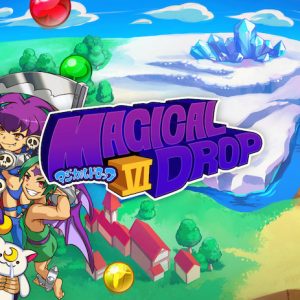La-Mulana is a game based entirely around exploration – if you don’t like exploring, then it goes without saying that you won’t enjoy this game. While developer Nigoro’s gone to no length whatsoever to make the game in any way accessible to ‘casual’ players, the exploration is handled extremely well. Equipped with just a laptop, a whip and a few weights (required to solve puzzles) you’re placed in the game’s starting village – following a small chat with the village’s elder, Xelpud – free to explore. Or get lost, depending on how good you are.
What makes the game so interesting, and unique at a time that’s filled with games adamant to ensure you stay on-track, is that it offers next to no guidance whatsoever, and leaves you to play through the ruins’ areas in any order you please. Where a majority of modern games have signposts indicating where each path leads, the signposts in La-Mulana are written in the form of cryptic clues, or better still, in a foreign language which requires a translator app for your laptop to read.
As if La-Mulana‘s enthralling gameplay wasn’t convincing enough, Professor Lemeza’s laptop goes to some length to add depth to the overall game, in the form of an inventory system of the same ilk as Resident Evil 4‘s; rather you find computer programs instead of weapons, and select which ones you’d like to utilise without exceeding the laptop’s RAM capacity instead of deciding whether to keep herbs or grenades.
As with many adventure games, La-Mulana is filled with puzzles, and one of the very first sees you having to destroy four pillars – each bearing a unique logo based on the weather – in a specific order; hitting one out of place results in a lightning attack which reduces your HP to less than a quarter of its full capacity. So far, so unforgiving, and we haven’t even got to the good part, yet: a signpost writes a paragraph full of cryptic clues, this time describing the weather, and therefore subtly hinting at the order in which you must whip the pillars if you plan on avoiding near-death.
There’s no denying that the game is, at its heart, a retro game. Despite the WiiWare version boasting updated graphics over the PC original, its SNES attire – from the 16-bit aesthetics to the somewhat shonky controls – could easily deceive those out of the loop into believing that they’re playing a Virtual Console game; and this is in no way detrimental to the overall experience.
In terms of the controls, jumping feels extremely archaic, and the physics similar to those in the original Super Mario Bros.; the control setup – which makes use of pretty much all of the Wii’s controllers, plus a USB keyboard – is simplistic enough to get to grips with, although using the B button, should the horizontal Wii Remote be your controller of choice, can start to get a little awkward during long play sessions.
La-Mulana (WiiWare) Verdict
Overall, La-Mulana relies on an array of niche design decisions to thoroughly please those that would be interested in a game of its genre regardless, and as a result appeals to only the smallest of demographics. For anyone that didn’t get along with the likes of Cave Story, it’s best that you stay well away from what’s surely WiiWare’s biggest ‘hardcore’ game to date. If what you’ve read in this review, and perhaps elsewhere, appeals to you then you’re certainly in for one last downloadable Wii treat before the Wii U arrives next month, with an eShop full of indie titles to boot.
7/10
Originally published on NintendoInvader.com






